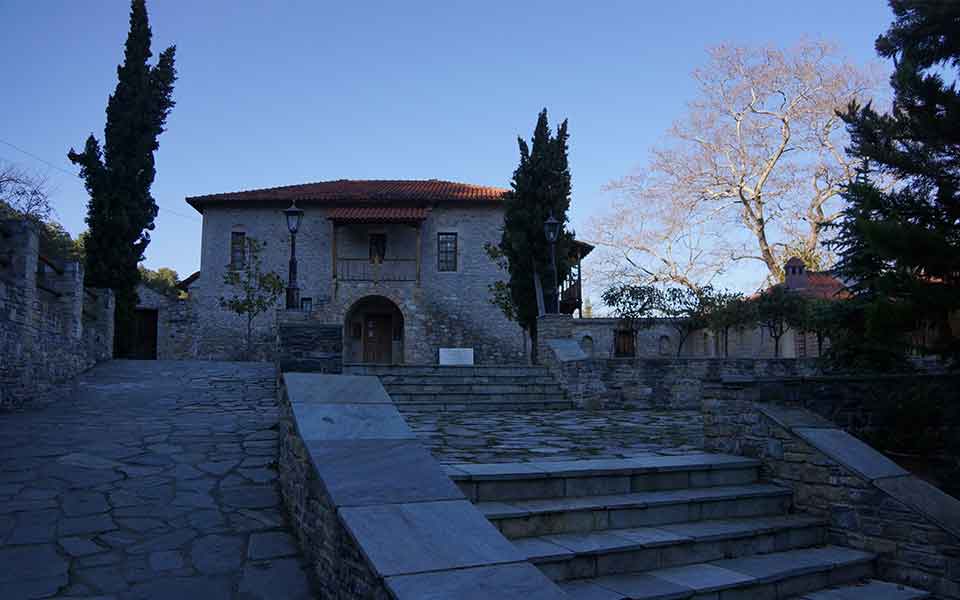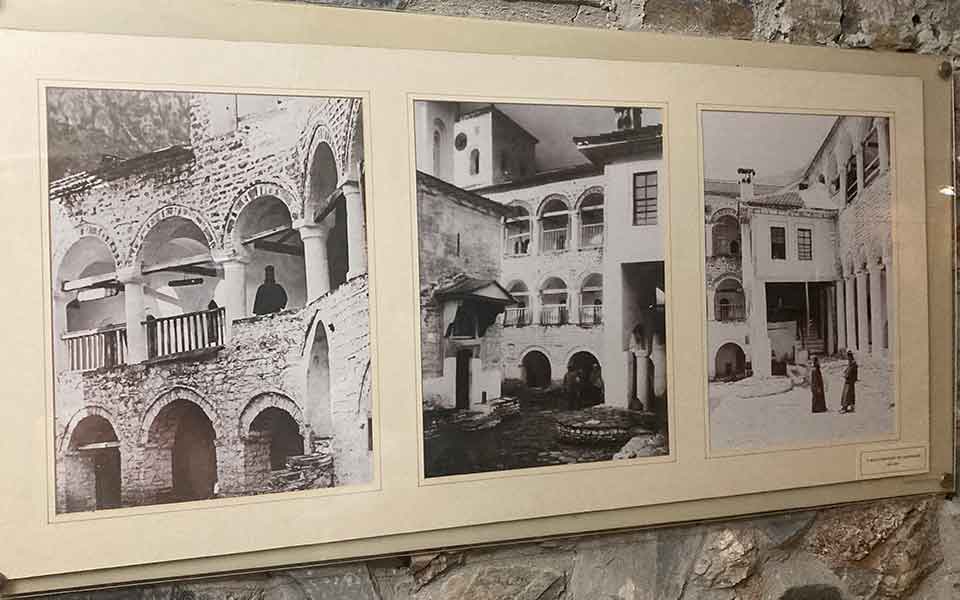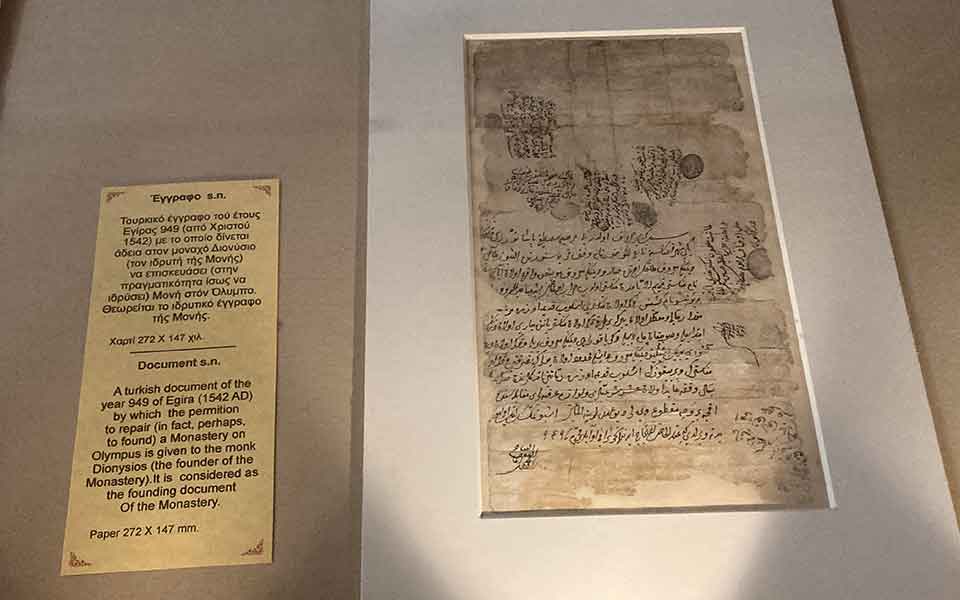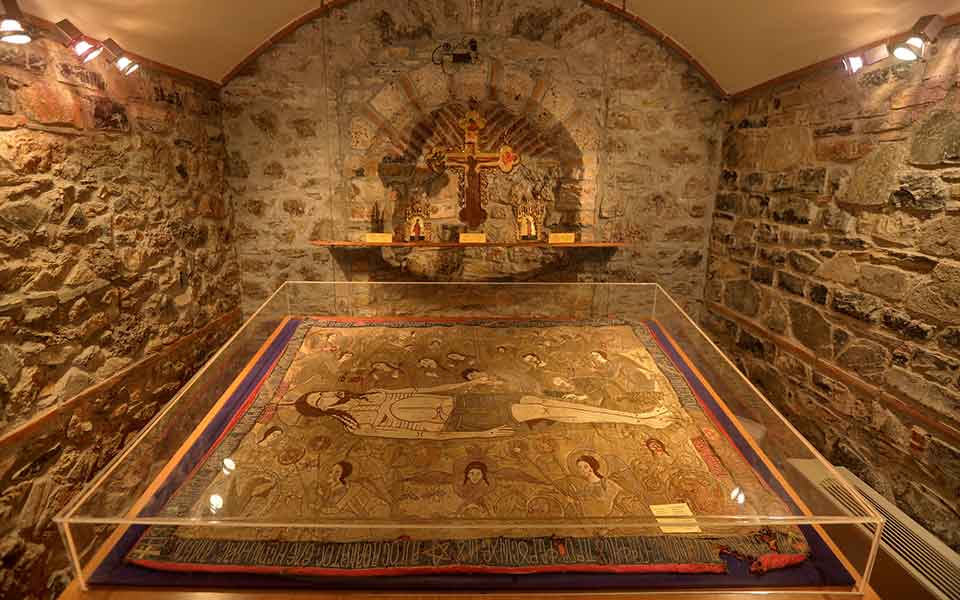A beautifully ornate epitaph, hand embroidered with gold thread, has been evaluated by specialist art appraisers as one of the seven best in the world, due to its extraordinary technical and artistic value. The 16th century embroidery, painstakingly created by a monk in Meteora, took millions of stitches to complete.
“The evaluators told us that the Epitaph is among the seven best in the world in terms of its technical value. This is because it is very detailed and gold embroidered,” said Fr. Amfilochios, a monk at the Holy Monastery of Agios Dionysios in Olympus, during an interview with the Athenian/Macedonian News Agency.
The Epitaph and other historical relics from the Monastery, several of which were saved from destruction by the Ottoman Turks and, later, during the German Occupation in World War II, were stored in warehouses. Little was known about their historical or artistic value prior to the evaluation. Now, the priceless relics are on display in a new exhibition in the museum of the Monastery, three kilometers from Litochoro in the prefecture of Pieria.

© Holy Diocese of Kitros, Katerini and Platamonas
Founded in 1999, the Museum of the Monastery of Agios Dionysios was inaugurated by the Ecumenical Patriarch Bartholomew and the Blessed Archbishop of Athens and All Greece Christodoulos. Before cutting the ribbon, they planted two cypress trees on the left and right of the museum.
“The monastery has a history of 500 years. Following the destruction of the old Monastery by the Germans, during World War II, many artifacts were destroyed or stolen. Those that we did retrieve, we knew nothing of their value or significance. As such, the need to preserve the relics and to inform the world about the monastery and through its exhibits became a priority,” added the Abbot of the Monastery, Archimandrite Fr. Maximos.
Upon entering the first floor of the museum, visitors can see a display of old photographs of the Monastery before and after it was destroyed by the Germans. There are also historical manuscripts among the exhibits, including a document from the ruling Ottoman Turks giving formal permission to build the Monastery in 1452. Other relics include silver utensils and an ornate wooden cross, where visitors can look through a magnifying glass to see every minute detail.

© Holy Diocese of Kitros, Katerini and Platamonas

© Holy Diocese of Kitros, Katerini and Platamonas
“Our Museum consists of various exhibits, including relics of the Saints, various icons of post-Byzantine art and some older ones. We have old books, priests’ uniforms, holy chalices, wood-carved crosses and embroidery, most notably the Epitaph that was embroidered in Meteora by a monk,” explained Fr. Maximos.
“A modern library with 40,000 books and 35,000 magazines has been created on the second floor. These books are artifacts are the property of our Monastery and we want to preserve them, to continue the work of the Monastery and to promote it to the world,” he concluded.












